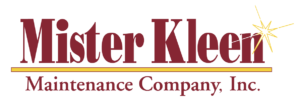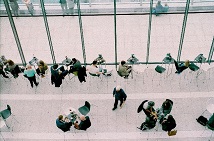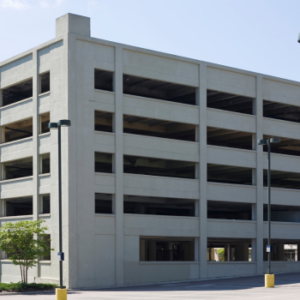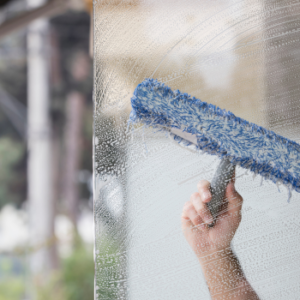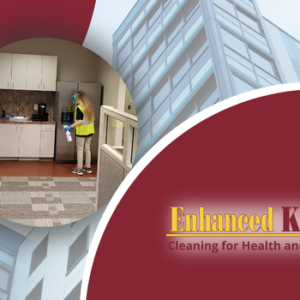With the Fall season in full swing, everyone starts to look forward to the fun activities that come along with cooler weather in the DC metro region. However, no one looks forward to the illnesses that can spread this time of year, especially the flu.
While you can get the flu any time of year, fall and winter are when this illness spreads the most. And last year’s flu season was the worst one in decades.
According to the Centers for Disease Control and Prevention (CDC) and The National Institute for Occupational Safety and Health (NIOSH), annual direct costs from hospital and doctor’s visits in the U.S. are an estimated $4.6 billion. The flu also causes employees in the U.S. to miss approximately 17 million workdays. This comes to an estimated $7 billion a year in sick days and lost productivity!
What can you do to help prevent the flu from running rampant in your commercial office or high security facility this year? Here are some tips:
Encourage building occupants to get a flu vaccination
Every flu season is different and influenza infections affect people differently regardless of health. An annual flu vaccine is the best way to reduce the risk of getting the seasonal flu and spreading it to others.
Here is a link to the CDC website with some key facts of influenza along with recommendations of the type of vaccines to get. https://www.cdc.gov/flu/protect/keyfacts.htm
Remind tenants the importance of personal hygiene
Frequent hand washing, especially before certain activities, is one of the best ways to remove germs, avoid getting sick and prevent the spread of germs to others.
Sending out an email with the below image and this link with videos that the CDC has put together demonstrating how to properly wash hands can go a long way. You can also print this image, or one similar and have it posted in your restrooms and kitchen areas.

It is also important to remind all building occupants to cover their nose and mouth when coughing and sneezing. This graphic below, which is also available on the CDC website, can be shared as well:

Install touchless hand towel dispensers and hands-free soap dispensers
Restrooms and kitchens are heavy traffic areas in your facility, and these are areas in which germs can spread easily. This is especially true on commonly touched items such as soap dispensers and hand towel dispensers.
Installing touchless hand towel dispensers and hands-free soap dispensers are great ways to reduce employee’s exposure to high-touch items in your restrooms and kitchens.

If you are unsure of which towel dispensers and hands-free soap dispensers to go with then feel free to contact us for our recommendations.
Also, placing a trash can by restroom doors can encourage building occupants and visitors to use a paper towel to open the door versus their hands.
Place hand sanitizing stations in common areas throughout your facility
Providing hand sand sanitizing stations can also help prevent the spread of infection and illness in your facility. It is important to have alcohol-based hand sanitizers where your building occupants can easily access them. These areas include:
- Entrances and lobbies
- Elevator banks
- Reception desk
- Work areas
- Restrooms
- Fitness facility/locker rooms
- Conference and meeting rooms
- Shared workspaces
- Break rooms and cafeterias
Have an effective flu-response plan in place
“If you are sick, do not come to work!” This is by far the most important communication to send to your building occupants.
One person who comes in sick, forgets to cover their nose and mouth when coughing or sneezing, and touches several items throughout the facility, can cause an outbreak.
Also, having a proper regimen in place to clean, disinfect and sanitize your facility is a critical component to lowering your risk of a flu outbreak.
Building occupants may commonly mistake cleaning as disinfecting or vice versa. Clarifying the difference can help educate your building tenants on the importance of each, and inform them of when these methods are appropriate to use.
Below is a brief explanation for your building occupants to help clarify the difference of cleaning, sanitizing and disinfecting:
Cleaning
Cleaning involves using soap (or a detergent) and water to remove germs. Cleaning doesn’t necessarily kill germs, but it can lower the risk of spreading an infection by attempting to remove them from the cleaning process.
Sanitizing
Sanitizing should only be applied to food contact surfaces. Sanitizing a surface makes that surface sanitary or free of visible dirt contaminants that could affect your health. It is important to note that sanitizing does not make anti-viral claims, meaning sanitizing offers no guarantee of killing the flu or other viruses commonly found on surfaces.
Sanitizing does, however, reduce (not kill) the occurrence and growth of bacteria, viruses, and fungi. Ultimately, sanitizing is better than cleaning alone, but the reduction of harmful pathogens on surfaces is better when you disinfect.
Disinfecting
Disinfecting uses chemicals to kill germs on surfaces. Using a disinfectant is not the same as cleaning (just like cleaning is not the same as disinfecting). If a product is labeled as “disinfectant only” then federal law requires surfaces to be cleaned first before applying a disinfectant.
Also, when using a disinfectant, make sure to read the label carefully to determine how long the solution needs to be on the surface before removing. And when using bleach as a disinfectant, make sure to dilute the solution and comply with state or local regulations. A recommended dilution is 1 part bleach to 10 parts water (or 1 oz. of bleach and 10 oz. of water).
One thing you may want to consider is having a total facility disinfection for flu season performed. Mister Kleen provides this service in which a team of technicians will come in and thoroughly disinfect your facility to help kill germs and prevent the spread of the flu virus from running rampant in your facility. Contact us to find out more about this service we can provide for you and your facility in the DC metro region.
Don’t get blindsided by the flu this season. By incorporating these tips you can dramatically reduce your chance of the flu virus from taking over your facility.
Mister Kleen is a leading provider of contract cleaning services to Commercial and High Security facilities since 1976. Our primary service areas is the DC Metro region. We also provide a variety of interior and exterior specialty services.
Tags: flu, Flu season
Categories: Blog

